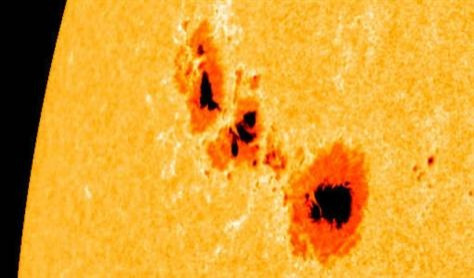Airline Passengers, Astronauts Exposed to Space Radiation

A strong solar storm that reached the Earth Monday has shrouded the planet with cosmic rays and high-energy particles that could be hazardous to astronauts and airline passengers in coming days, space scientists warn.
The National Oceanic and Atmospheric Administration earlier reported that the G3 class strong-to-severe geomagnetic storm that resulted from a Coronal Mass Ejection on the sun was active and strengthening. The reports said more storms would arrive in the next few days. But the latest NASA report says the CME that hit Earth's magnetic field is now subsiding.
The latest storm caused auroras that were visible around both poles and in a few states in the U.S., including Michigan, New York, South Dakota and Minnesota.
Scientists say the electromagnetic pulse of the solar flare could upset satellite communications, power grids and radio traffic while passing through the Earth. But no such effects have been reported.
Joe Kunches, a space scientist with the National Oceanic and Atmostpheric Administration, told The New York Times: When these charged particles go by our own magnetic field, it's like dumping gasoline on a fire. Everything gets a lot hotter.
Solar plasma penetrating the Earth's magnetic field can expose satellites and astronauts to the solar radiation in future, the Goddard Space Weather Lab reported.
Coronal Mass Ejection (CME)
A CME takes place when sunspot groups on outer solar magnetic fields clog the solar atmosphere, causing sudden and violent releases of gas bubbles and magnetic fields.
The recent solar flare was caused by sunspot 1302. According to scientists, the spot's recent activities are part of a larger pattern. The sun is now approaching the highest peak in its 11-year cycle of activity. The present cycle is known as Solar Cycle 24.
This solar storm is expected to peak in 2013.
© Copyright IBTimes 2024. All rights reserved.





















